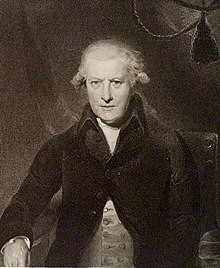
The 1766 food riots took place across England in response to rises in the prices of wheat and other cereals following a series of poor harvests. Riots were sparked by the first largescale exports of grain in August and peaked in September–October. Around 131 riots were recorded, though many were relatively non-violent. In many cases traders and farmers were forced by the rioters to sell their wares at lower rates. In some instances, violence occurred with shops and warehouses looted and mills destroyed. There were riots in many towns and villages across the country but particularly in the South West and the Midlands, which included the Nottingham cheese riot.
The Whig government of the Marquess of Rockingham implemented tax cuts on imported grain and prohibited exports in an attempt to lower the price of food. Rockingham's successor William Pitt the Elder went further, prohibiting the use of grains in distilling and suspending more import duties. The public responded to the riots by raising subscriptions to provide charitable relief. These were used mainly to subsidise food for the poor but some subscriptions sought to build public mills and granaries. The Secretary at War, Viscount Barrington, had anticipated trouble and positioned troops at key points across the country. These acted as a deterrent and to support local magistrates, who read the Riot Act seven times in 1766 to attempt to compel rioters to disperse. Eight people were shot dead in the course of quelling the riots.
The riots were largely over by October due to the effects of charitable relief and the use of military force. Hundreds of arrests were made with 59 convicted at special commissions of assize and 68 at the January 1767 court of quarter sessions. Many were sentenced to death at the assizes, but most of these sentences were commuted to penal transportation or the defendant pardoned; only eight men were hanged. Many of the following years also experienced poor harvests and further rioting occurred, though on a much reduced scale.